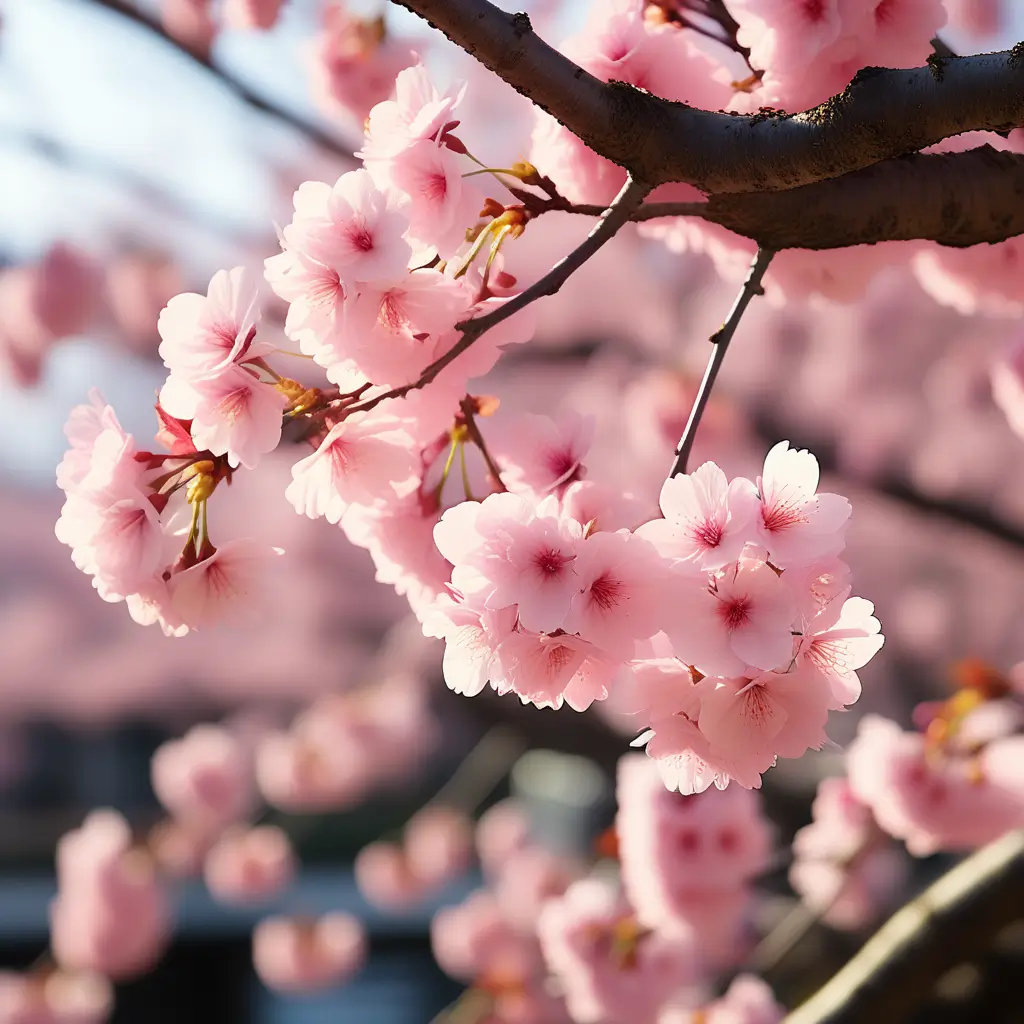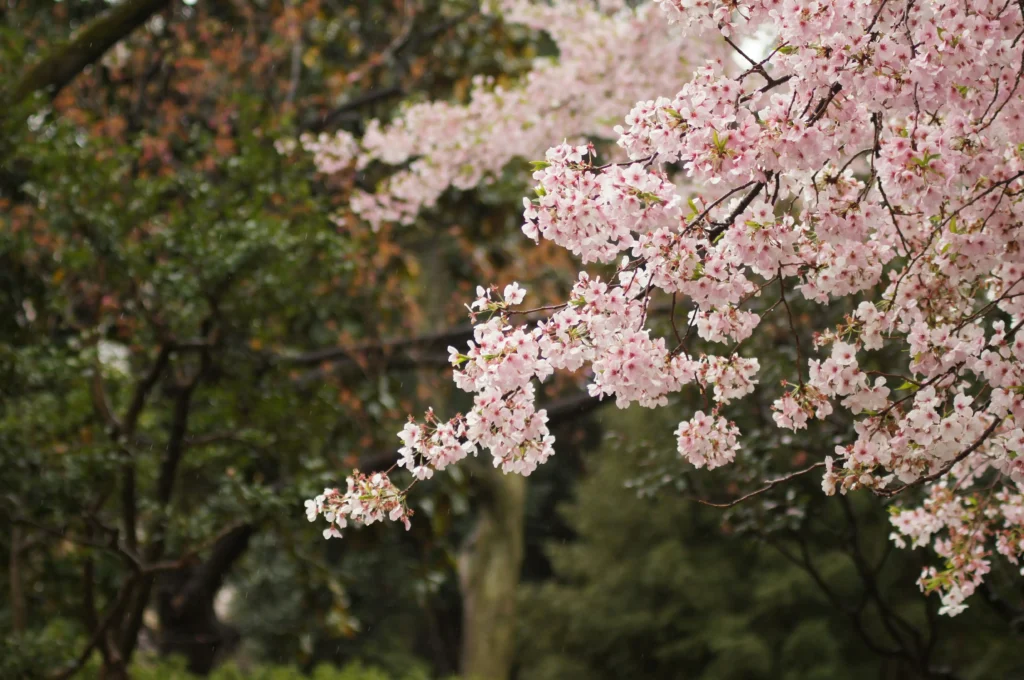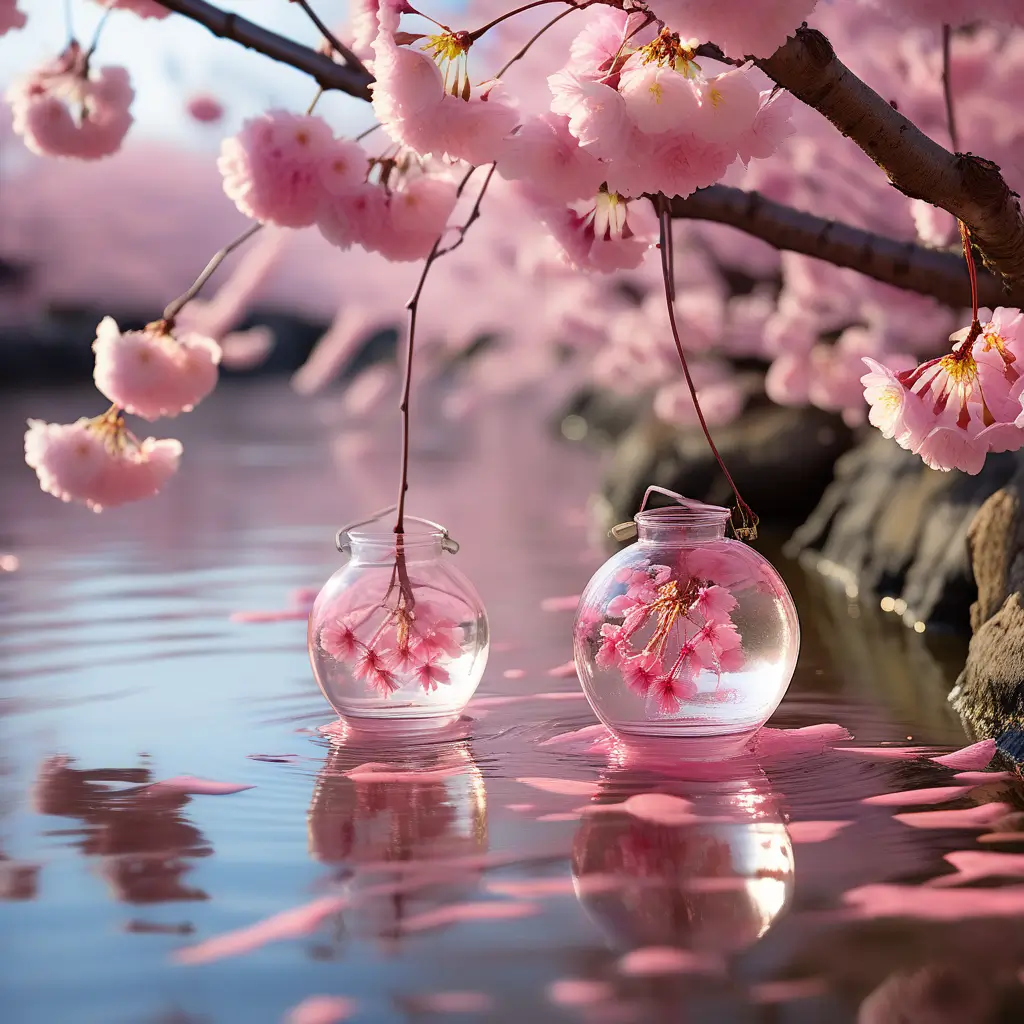Cherry blossom season marks the start of spring in many parts of the world. These blooming flowers have long held cultural significance in East Asian nations like China and Japan. Over centuries, cherry blossoms have become intrinsically tied to ideas of renewal, fertility, and fortunate beginnings.
This has led to a common legend that these delicate blooms can actually impart good luck or fortune. But is there any substance to this belief? This article will delve into the origins and persistence of the “lucky cherry blossom” legend, analyzing both mystical meanings and scientific evidence behind the claim.
When Did Cherry Blossoms Become Symbols of Good Luck?
To understand the concept of lucky cherry blossoms, you have to look at the flower’s enduring symbolism in Asian art and philosophy.
Spiritual and Historical Meaning
The cherry blossom legend dates back centuries in East Asia. In ancient China and Japan, the flowers signified:
- Springtime renewal: Cherry blossoms marked the end of winter. As one of the first blooms of spring, they came to represent revival.
- The life cycle: The flowers’ quick blooming phase symbolized the ephemeral nature of life. It underscored Buddhist and Taoist ideas of impermanence.
- New beginnings: In Japan specifically, the cherry blossom front coincided with the start of the new business and school years. It marked fresh starts.
These nations even adapted names reflecting such meanings. For instance, cherry blossoms are known in China as the flowers of prosperity and good fortune.
Over time, spiritual rituals and celebrations became closely entwined with cherry trees. Viewings of the blooms emphasized rebirth and luck for the future.
Practical Associations
Beyond mystical ties, there were practical reasons behind the lucky cherry blossom legend:
- Agriculture: The flowers coincided with peak planting seasons. More food could be grown in the fertile spring soil.
- Trade: Improved travel conditions expanded trade options with other regions in spring. This bought in more wealth.
- Marriage: Spring saw more weddings, as new couples invoked theSYMBOLISM of new beginnings and plentiful offspring.
In short, cherry blossom season correlated with fortunes on agricultural, economic, and familial levels in Asia.
How Are Cherry Blossoms Used Symbolically?

Over many centuries, cherry flowers became engrained symbols across different Asian art forms and cultural practices.
Mythology and Folklore
Myths highlight the cherished yet fleeting nature of the blossoms by imparting mystical backstories. For instance:
- Some Japanese tales say the delicate flowers represent fallen samurai warriors who return briefly as sakura blooms each spring. This underscores both impermanence and renewal.
- Other myths attribute cherry trees to divine origins, with gods instilling the flowers with spiritual power to signify the future ahead.
Such folktales perpetuated viewing cherry blossoms as almost prophetic symbols of prosperity.
Paintings and Iconography
Asian artists utilized cherry motifs for centuries across various schools and styles:
- Chinese paintings dating back over a thousand years depict sakura, alluding to the symbolic yin and yang and ties to femininity.
- Iconic Japanese ukiyo-e (woodblock prints) frequently reference the flowers alongside human subjects, making political and social commentary.
- Modern Asian artwork continues using cherry blossoms to express the circle of life through mortality and future generations.
This consistent presence in Asian art canonized the symbolic importance of transient cherry blooms. They came to universally represent the endless cycle across life, death, and rejuvenation.
Celebrations and Holidays
From China to Japan to Korea, cherry blossom season is marked by festive celebrations like:
- Hanami: Picnics and parties occur under the blooms across Japan as locals reflect on beauty and mortality.
- Sakura matsuri: Dances, food, and offerings emphasize the luck and prosperity of sakura in places like China’s Wuhan.
- Haneullim: Koreans celebrate the first full moon with wishes made under the blossoms for good harvests.
The joyous moods of such vibrant festivals perpetuate the “luck” ascribed to fleeting cherry views. The bloom peak directly coincides with such auspicious events.
Is There Any Scientific Basis to cherry blossoms Bringing Luck?
Given the rich cultural traditions, it’s understandable why cherry blossoms are considered lucky symbols across China, Japan, and Korea. But what does science actually say?
Coincidental Timing Behind the Legend
- Spring’s cherry blossom front just happens to occur around the same time as several unrelated fortunate events across history in Asia, fueling lore:
- Warmer weather improving agriculture, trade, and travel
- Former Chinese new year tied to the Lunar calendar
- Japanese business year restarting in April
- School years starting in spring
- In reality the flowers likely did not directly cause said prosperity themselves
Emotional and Psychological Impacts
- Studies show encountering natural beauty can boost moods and outlook through promoting calmness and optimism
- Reduction of stress hormones
- Increased production of “happiness” neurotransmitters like serotonin
- Cherry blossoms specifically inspire awe and joy, amplifying this effect
- Bright spring palette appeals to visual senses
- Representations of hope can unconsciously translate
- So cherry blossom viewings may put people in positive mindsets where they feel “luckier”
Limited Evidence Cherry Blossoms Impart Actual Luck
- No scientific studies directly link seeing cherry blossoms to future fortune
- Individual positive experiences seeing the flowers may create self-fulfilling prophecies
- e.g. viewing blooms before a successful job interview later
- But the flowers themselves don’t impart measurable luck or fortune
- Their meanings rather reflect people’s own ideas around prosperity
So in essence, science indicates cherry blossoms inspire emotional states where good fortune is anticipated rather than objectively delivered.
Why Do Modern Cherry Blossom Traditions Persist?

Despite limited concrete evidence behind cherry blossoms bringing luck, modern traditions like springtime sakura celebrations are thriving more than ever globally. What spurs this continued cultural mystique?
Cherry Blossom Flavors and Goods
- Asian brands frequently release limited-edition cherry-infused food and drinks to toast sakura season:
- Sakura-themed Starbucks drinks
- Sakura Kit-Kats
- Sakura flavored chips/cookies/candy/alcohol
- Luxury fashion houses co-opt sakura iconography in high-end collections
- Tourists purchase blooming cherry souvenirs while visiting spring festivals
- These trends let consumers literally ingest the symbolic luck
Continued Spiritual Tourism
- Sites renowned for cherry blossoms see massive spikes in visitors during bloom season
- Japan’s Hirosaki Park sees over 1 million people for its someiyoshino variety
- DC’s National Mall in America attracted peak crowds for its 1912 gifted trees from Tokyo
- Flower viewing harnesses global fascination with ephemeral Asian spirituality
- It fuels spiritual cherry blossom pilgrimages everywhere from Brooklyn to Paris
So in many ways, modern cherry blossom crazes let people physically access the sense of prosperity represented by the blooms. The legend persists through such channels.
Do Cherry Blossoms Really Bring Luck in the End?
cherry blossoms may not tangibly impart fortune as ancient legends supposed. But the symbolism around fleeting beauty and life cycles powerfully endures across global popular culture today. Perhaps being immersed in such optimistic spring magic helps manifest people’s own self-fulfilling fortunes.
Beauty Over Proof
- Little concrete evidence ties seeing cherry blossoms with increased actual material wealth
- Yet as heralds of spring, they profoundly move the human spirit across cultures
- Viewing the fleeting flowers represents the burgeoning hopes within oneself rather than exterior luck
- Their reputed fortunes may stem more from positive emotions than traceable mechanisms
Impermanence and New Hope
- The blooms remind viewers of life’s ephemeral essence through their transient peak
- Yet with such endings comes optimistic anticipation for the future’s unknowns
- Cherry blossoms fuse together cycles of death and rebirth seamlessly
- They assuredly signify springy renewal as much as fleeting mortality
So perhaps lucky cherry blossoms impart fortune of perspective instead of circumstance. They reflect the human condition through pairing passing beauty with faith in new chances ahead. And that resounding aura of optimism and joy during springtime viewing may be the luckiest feeling of all.
